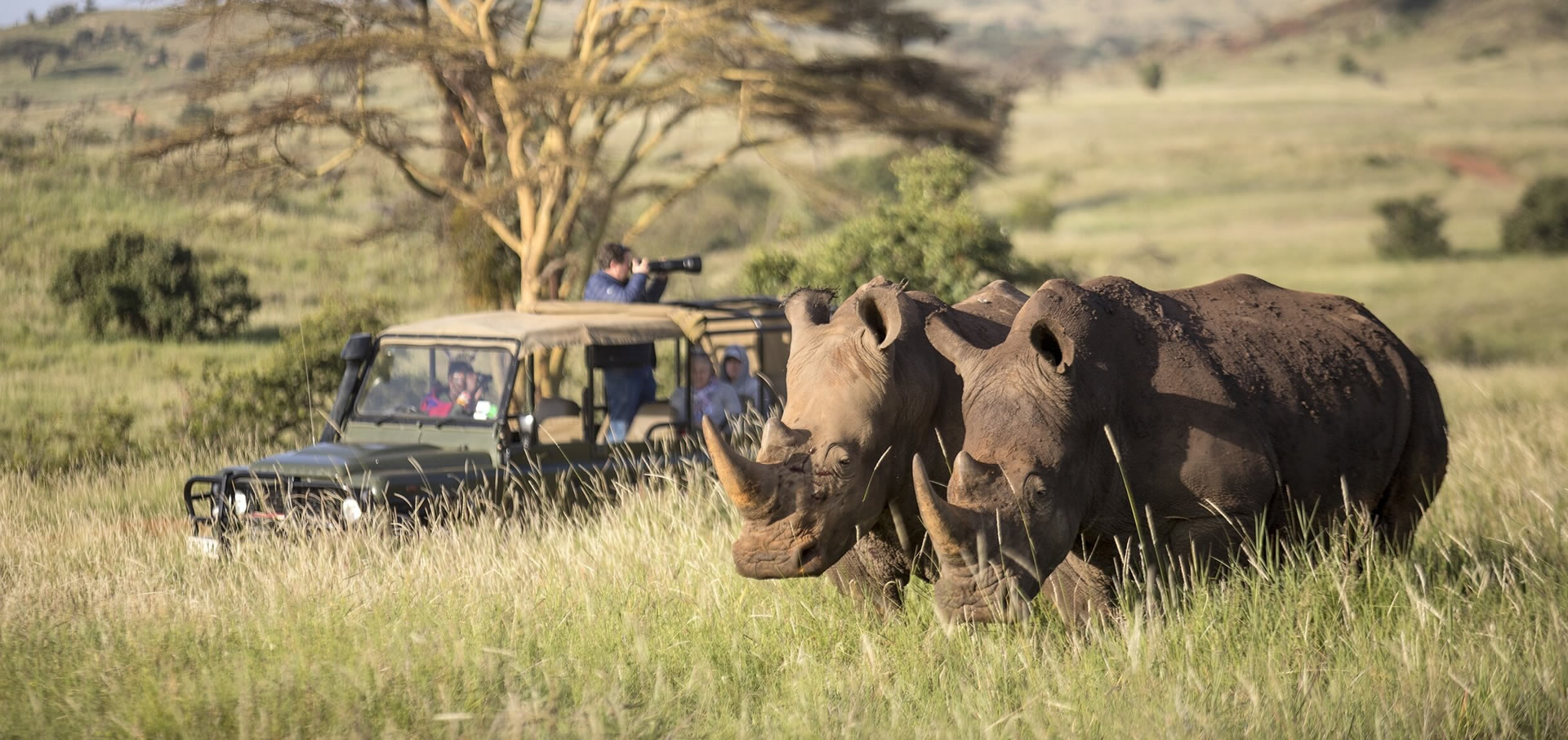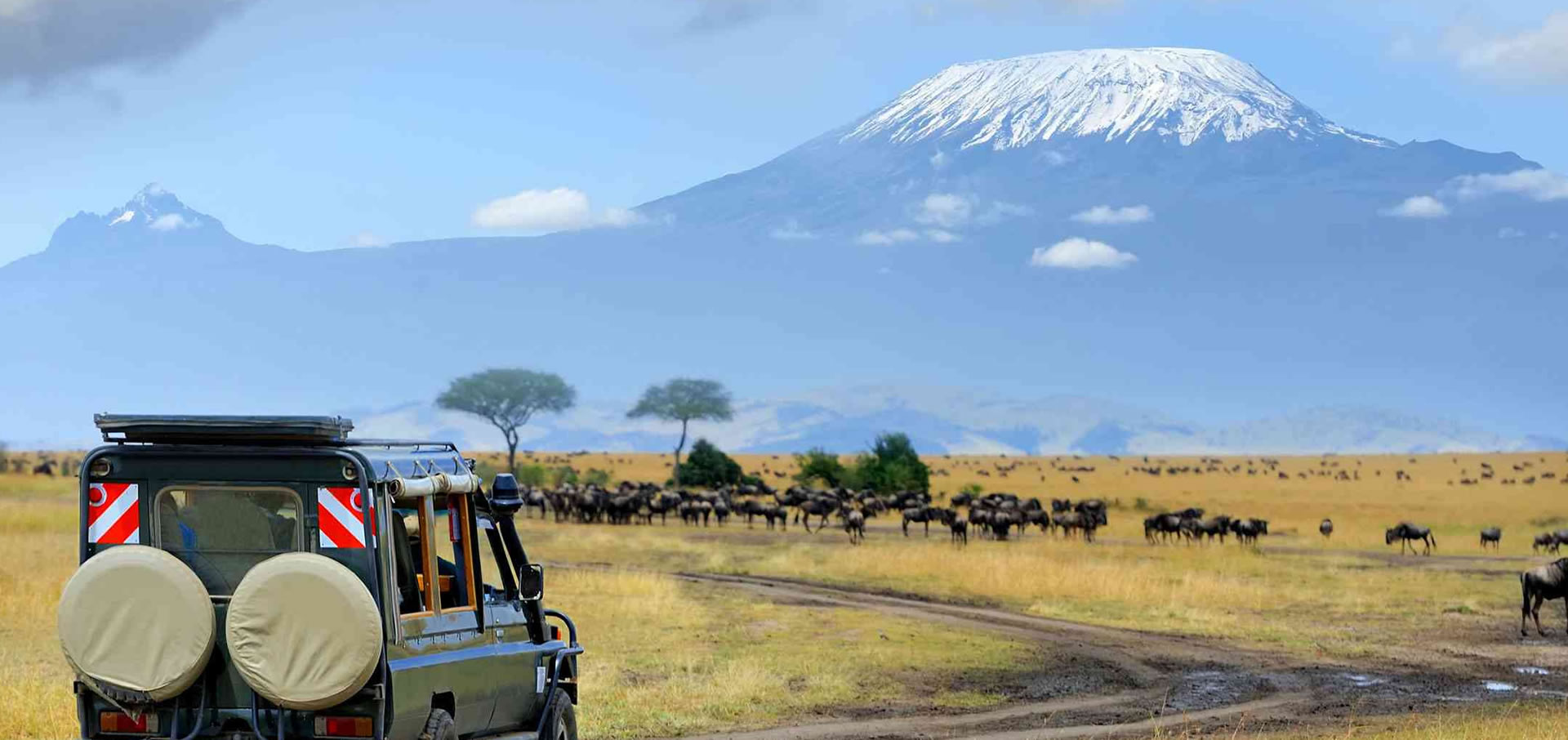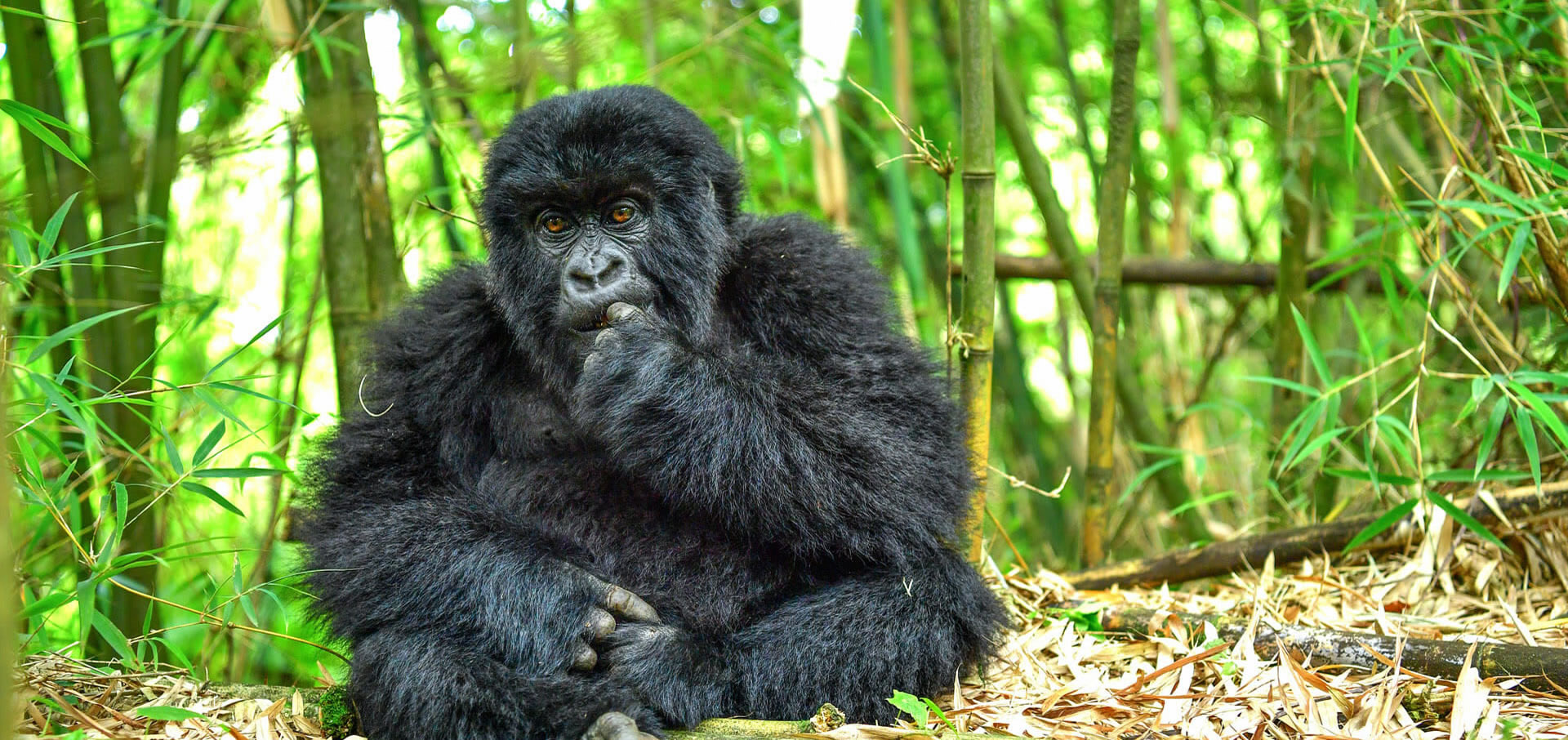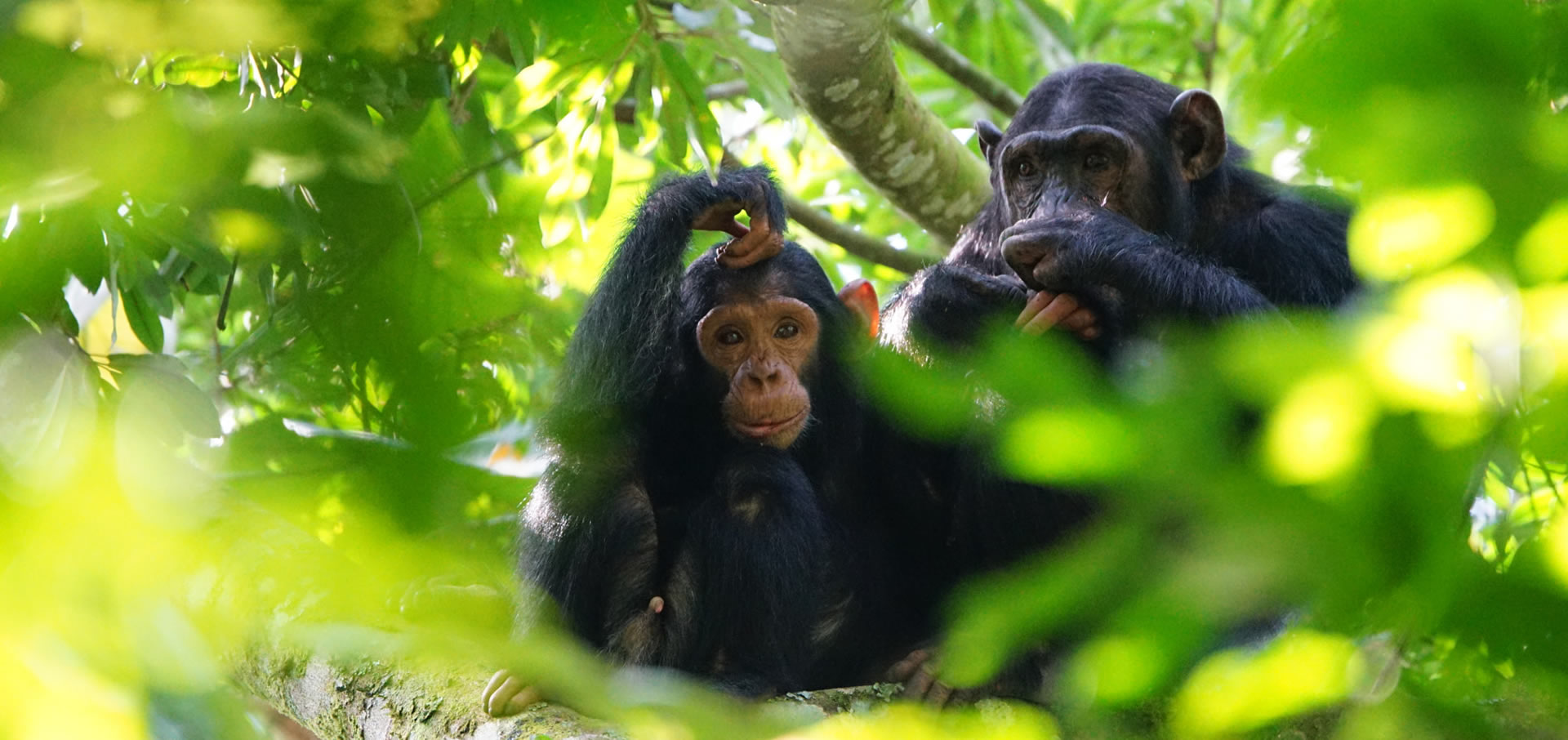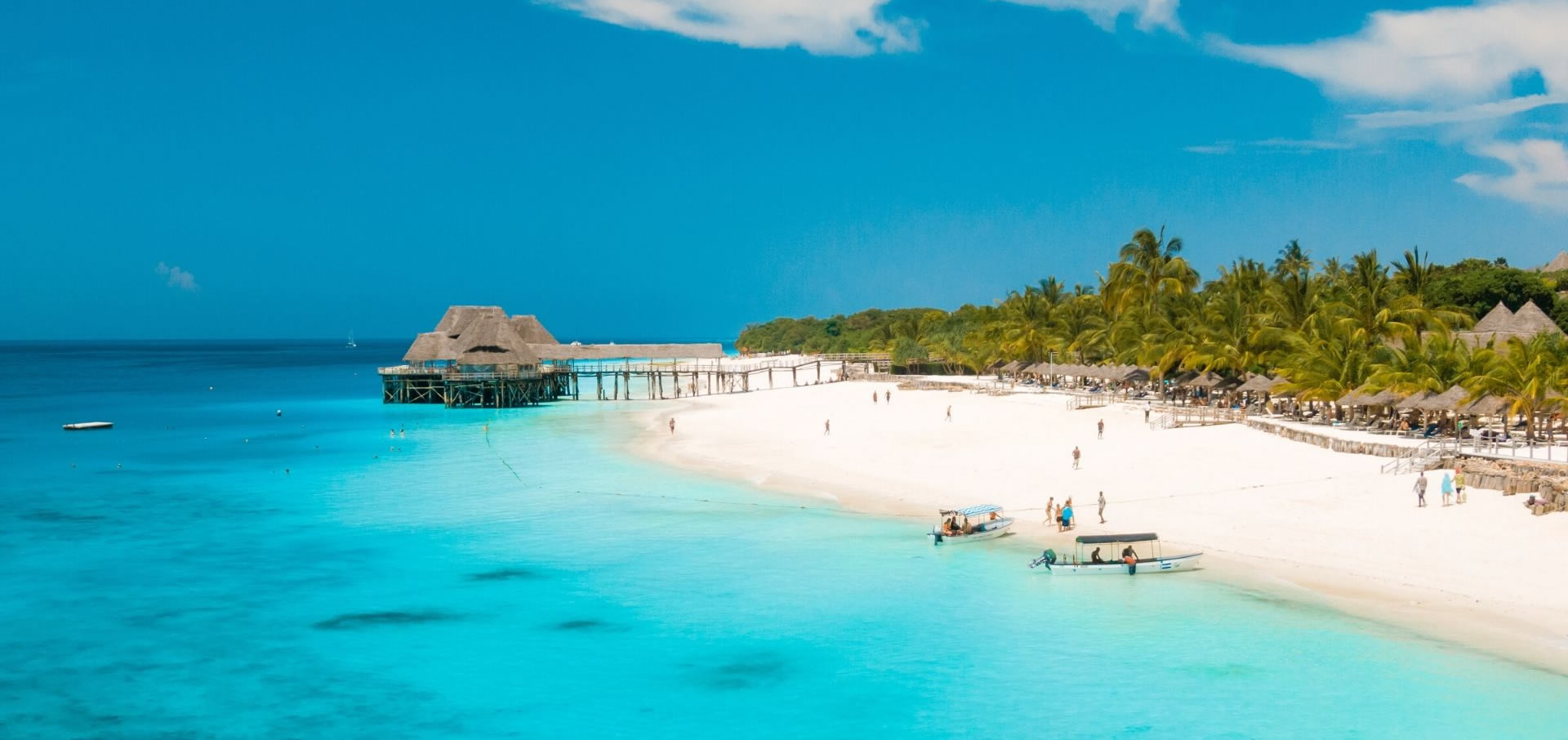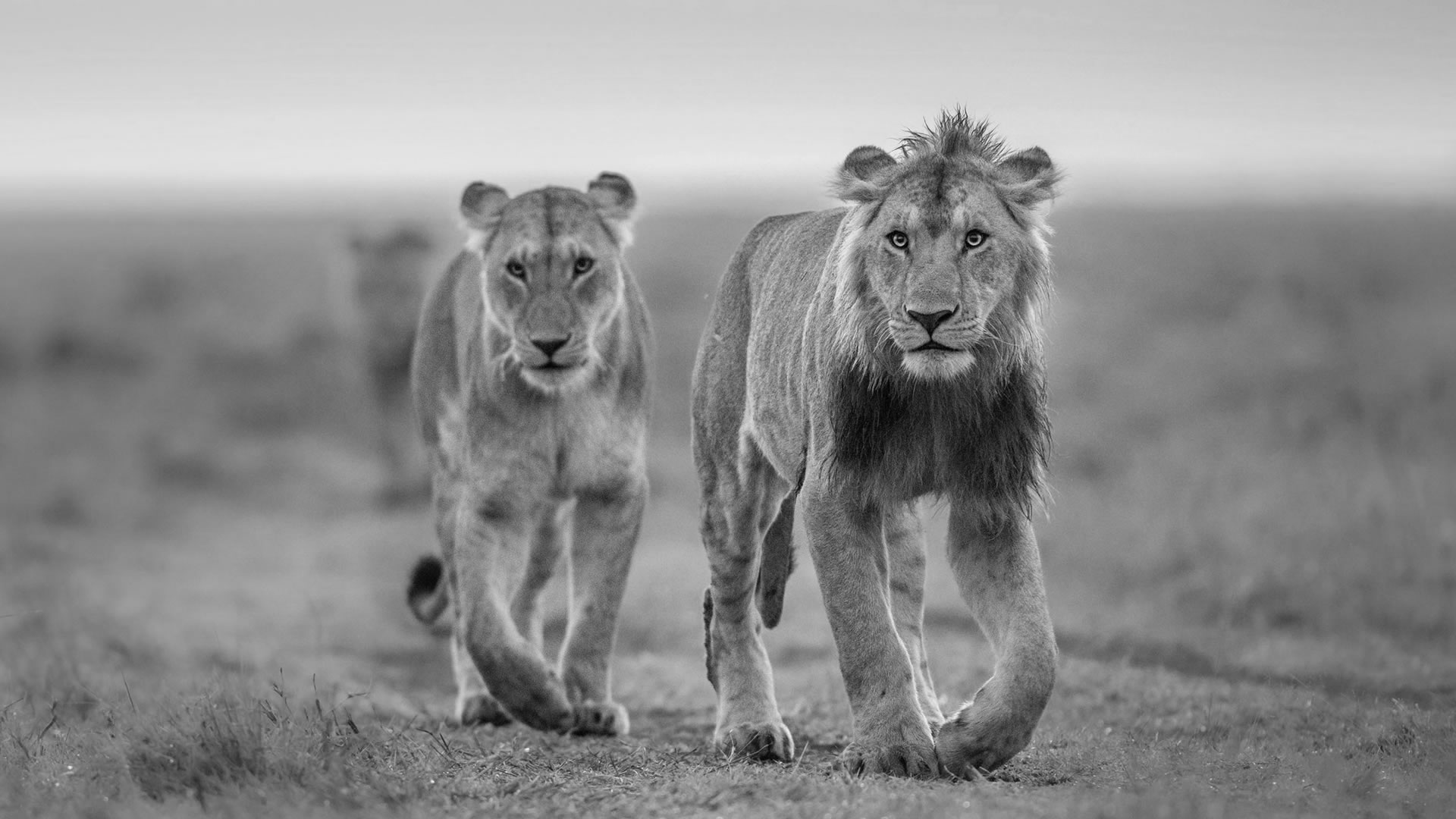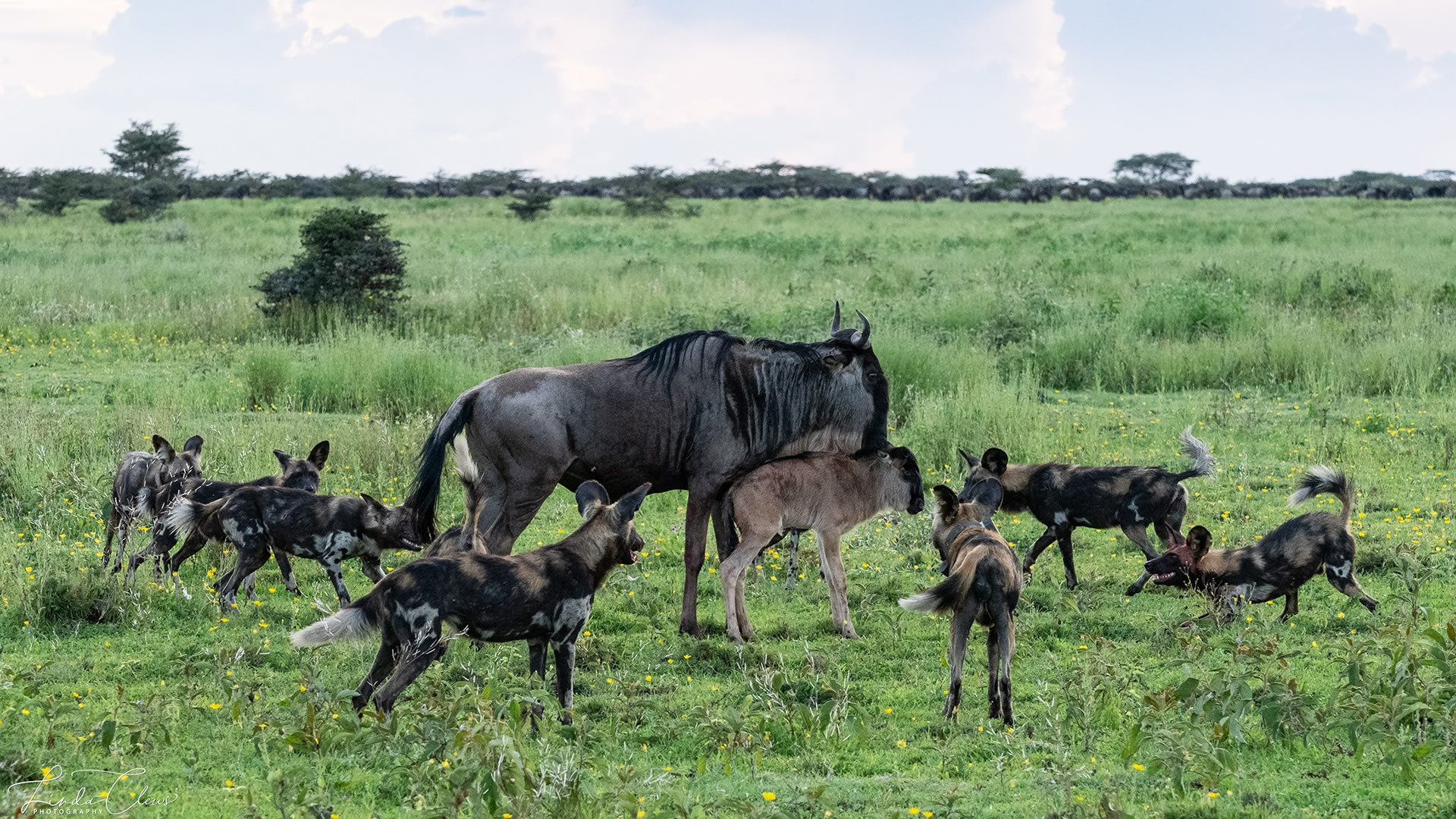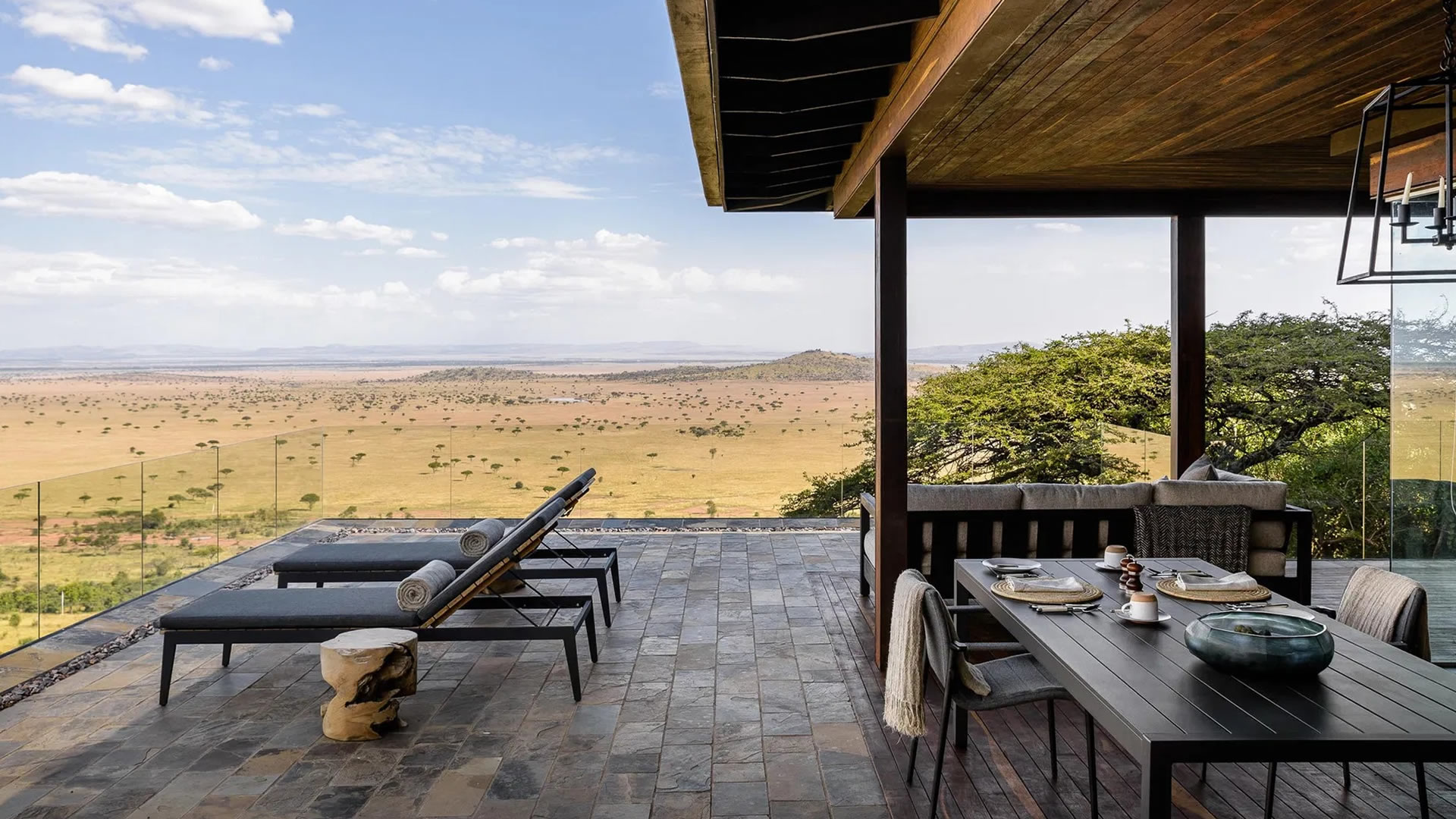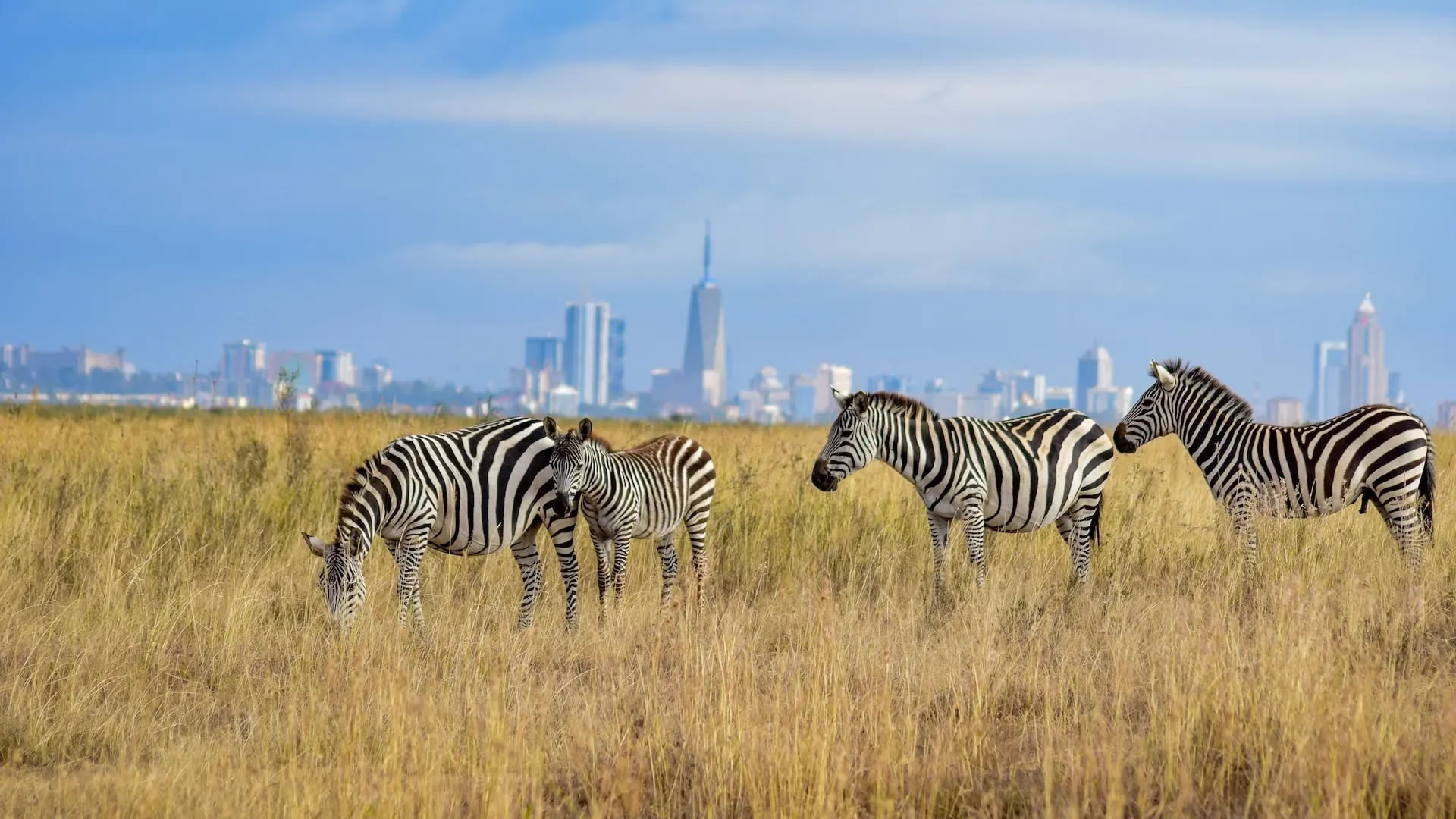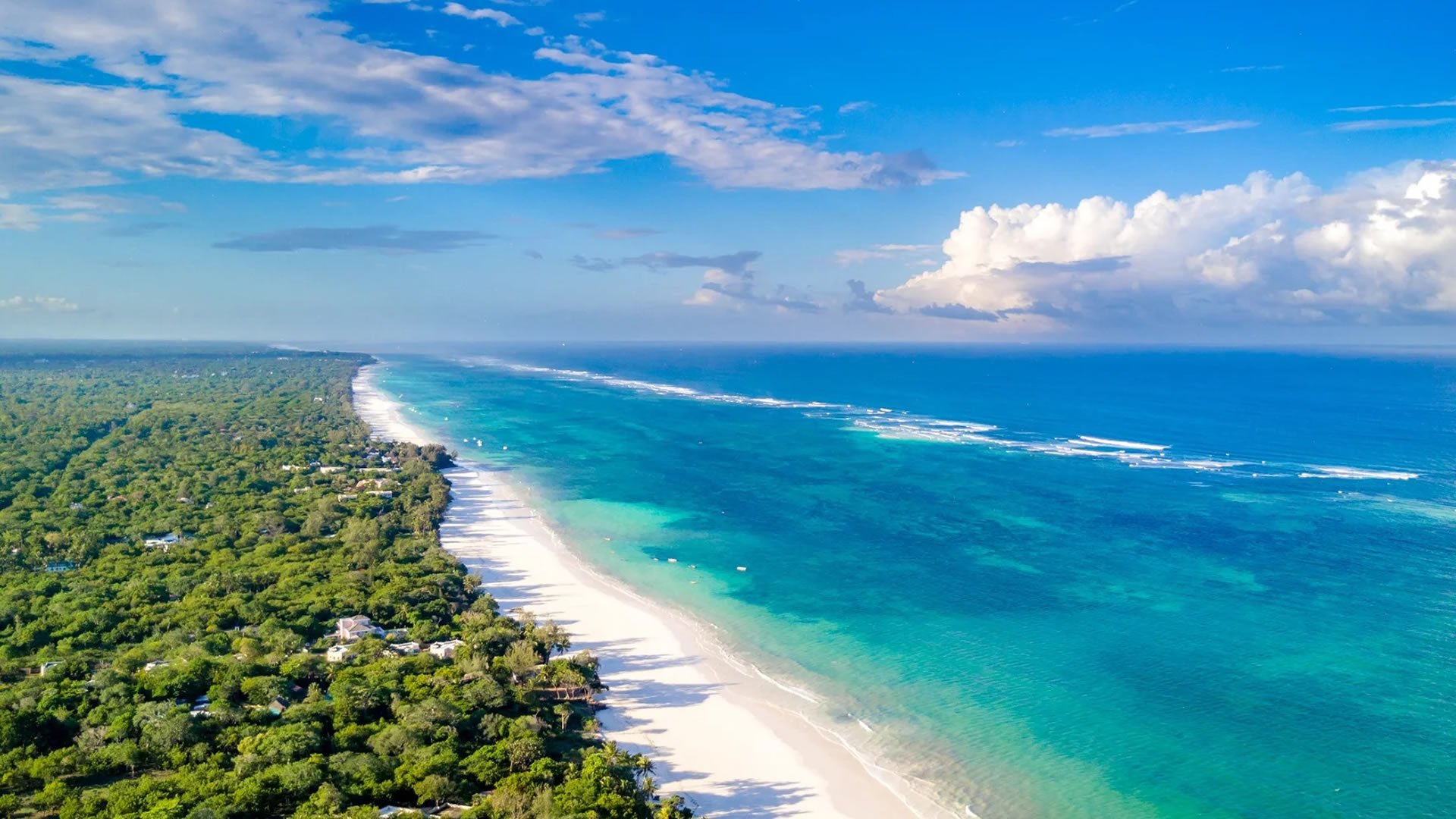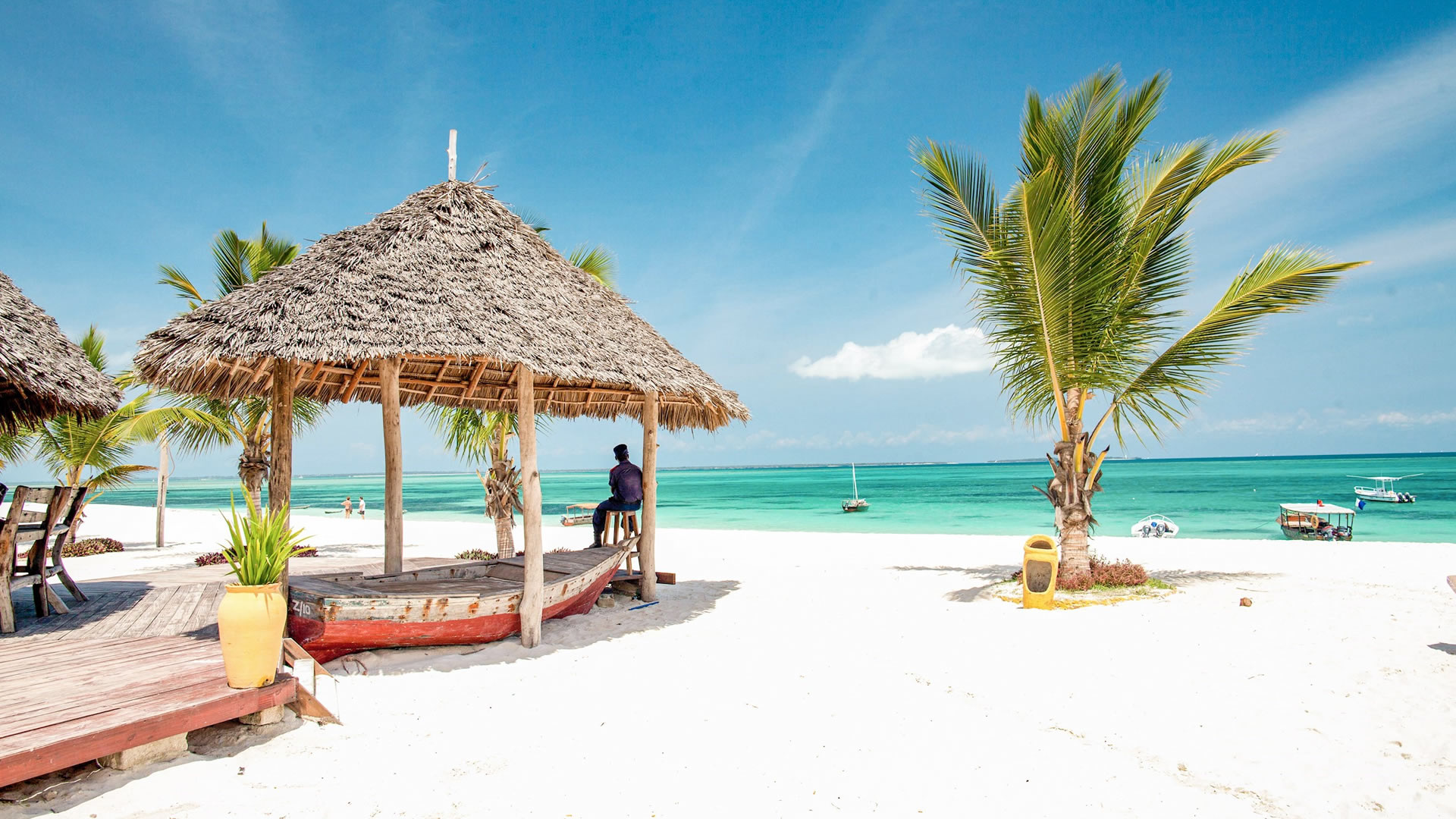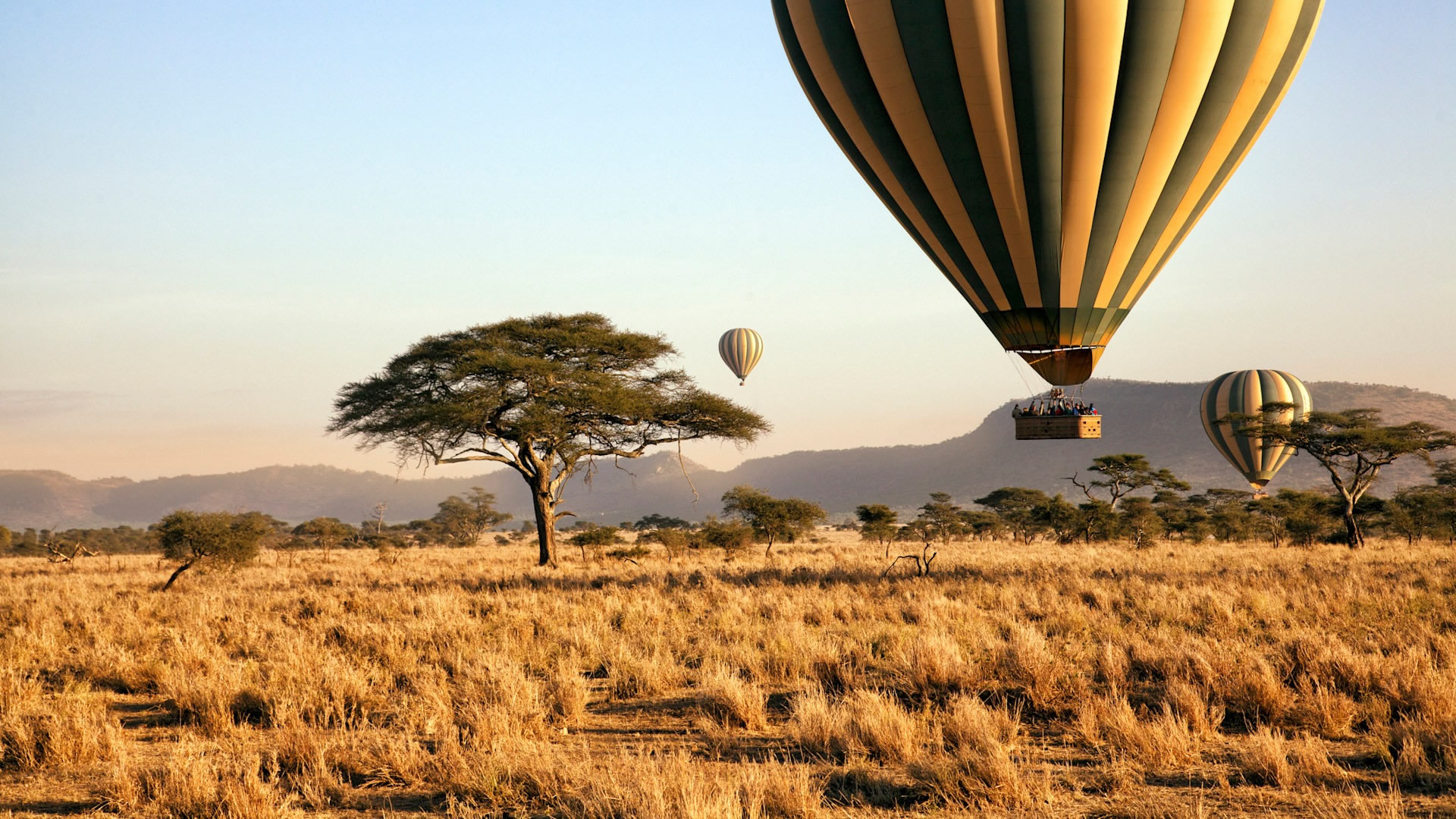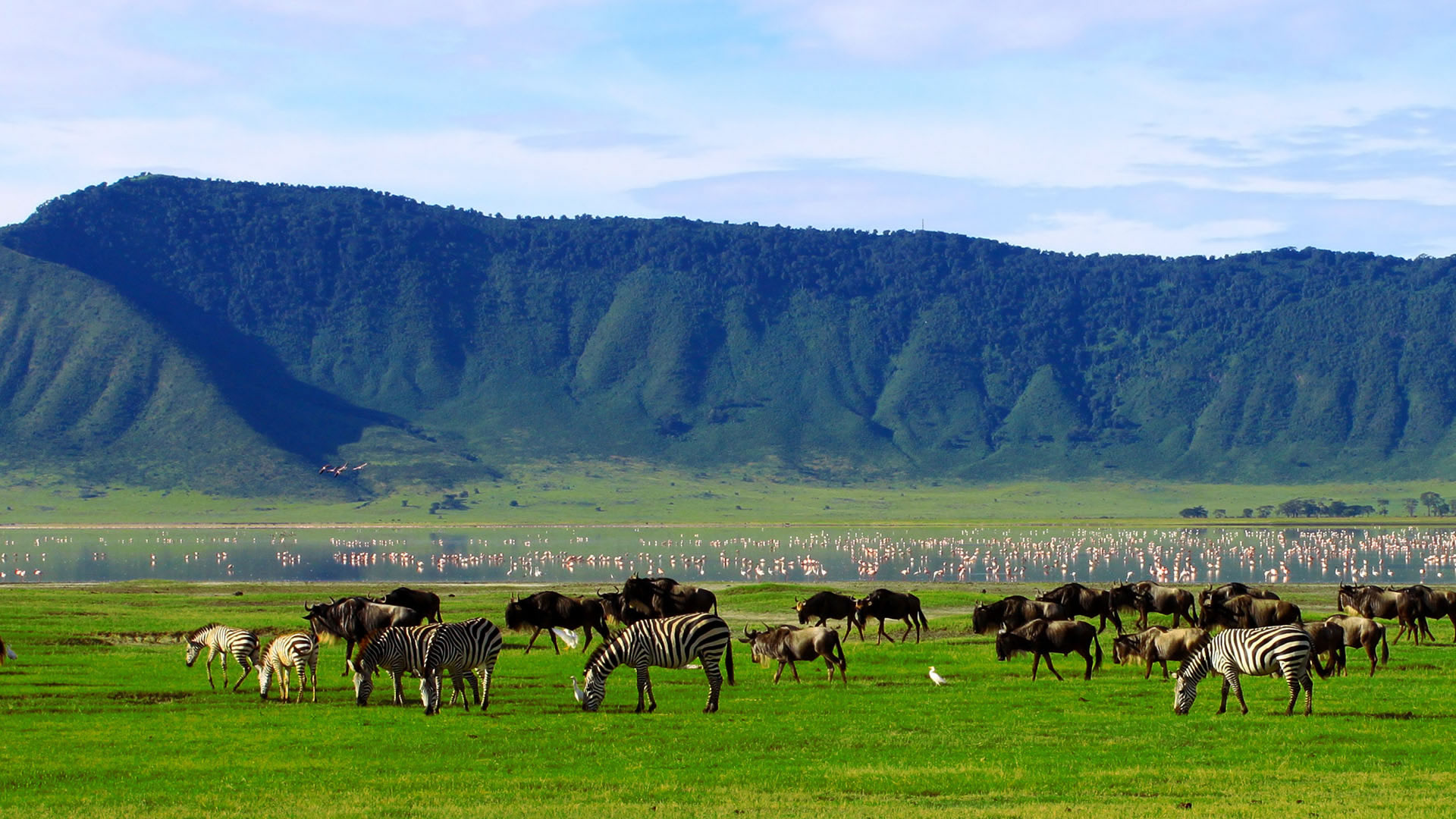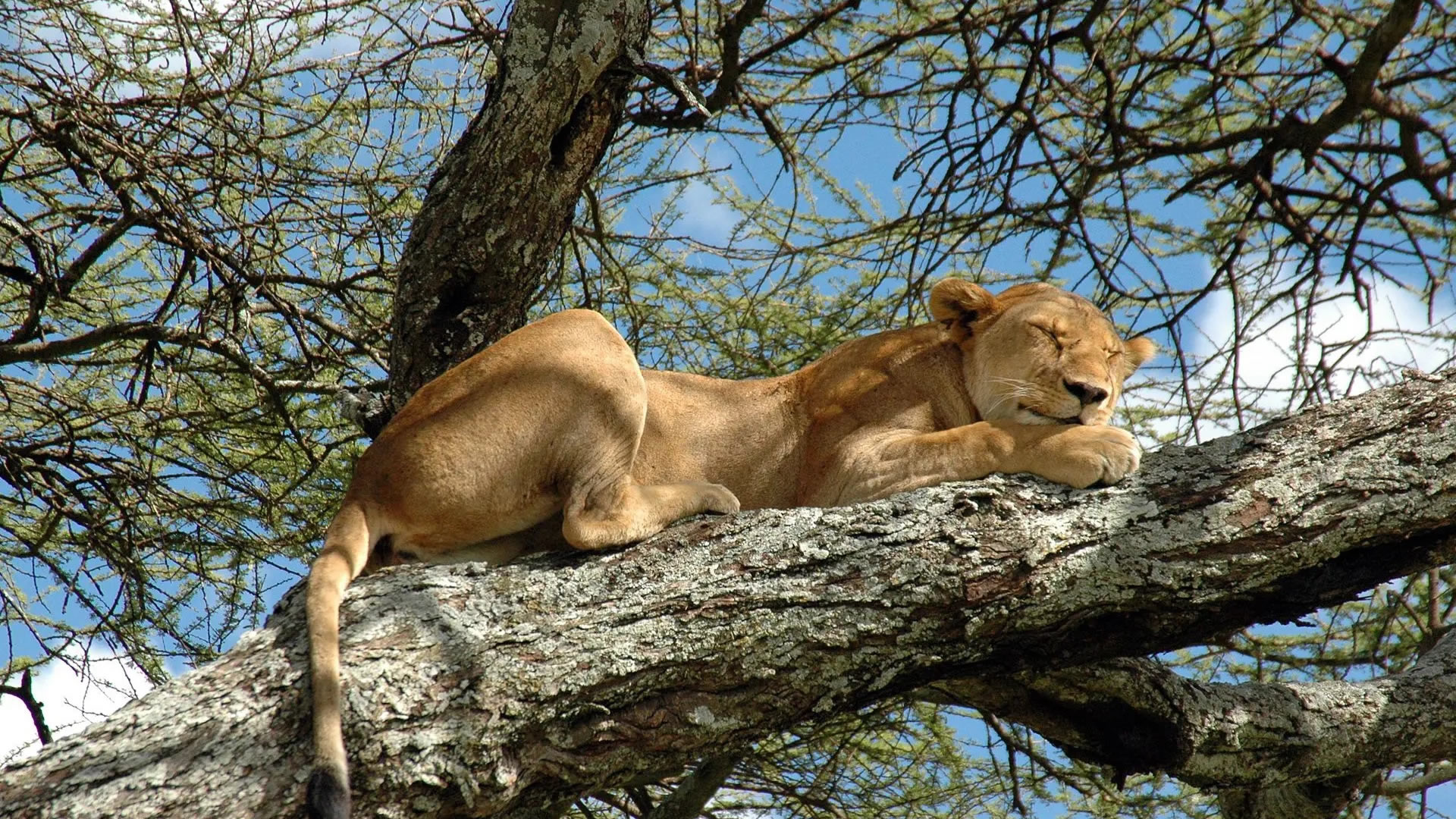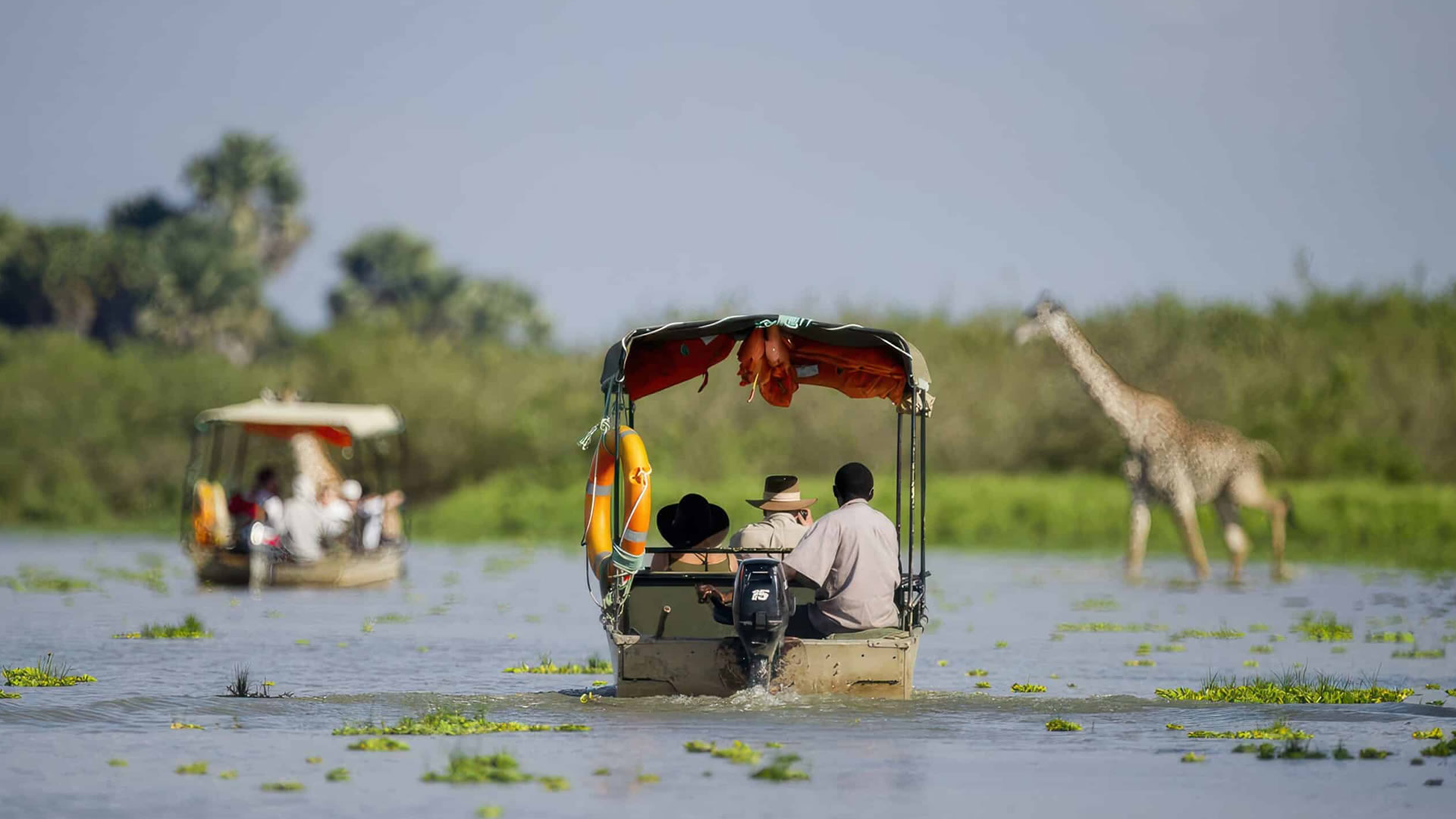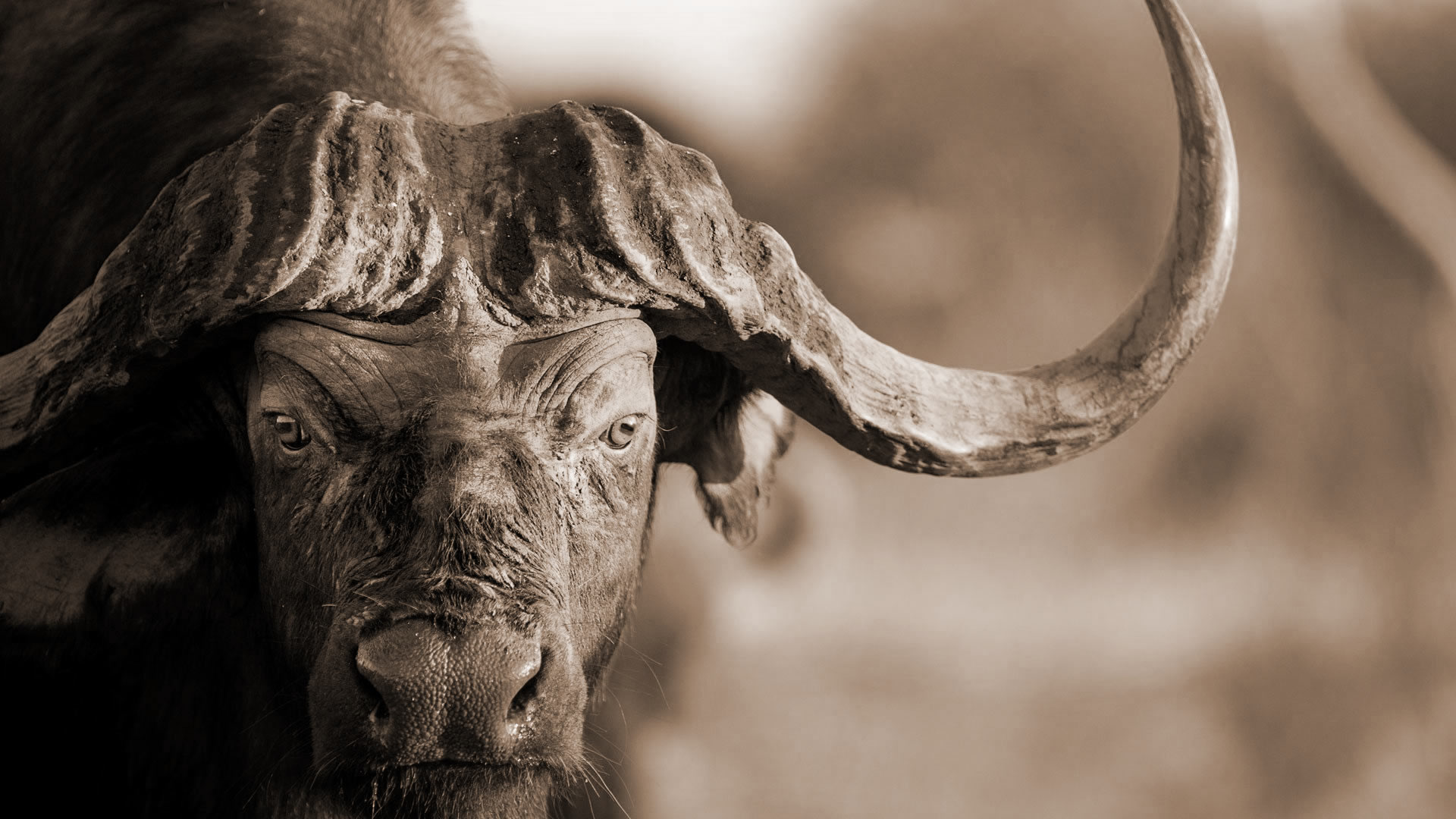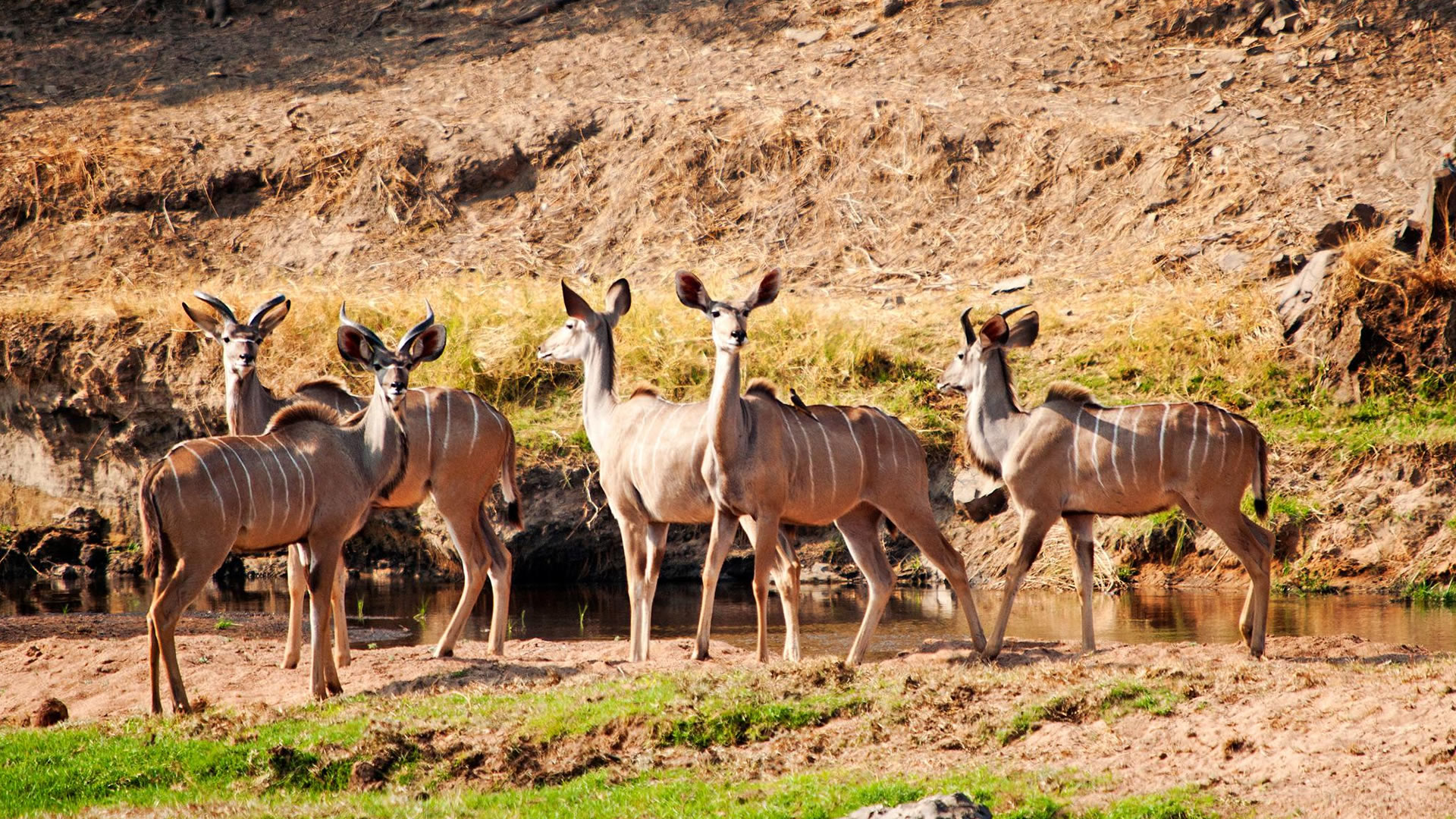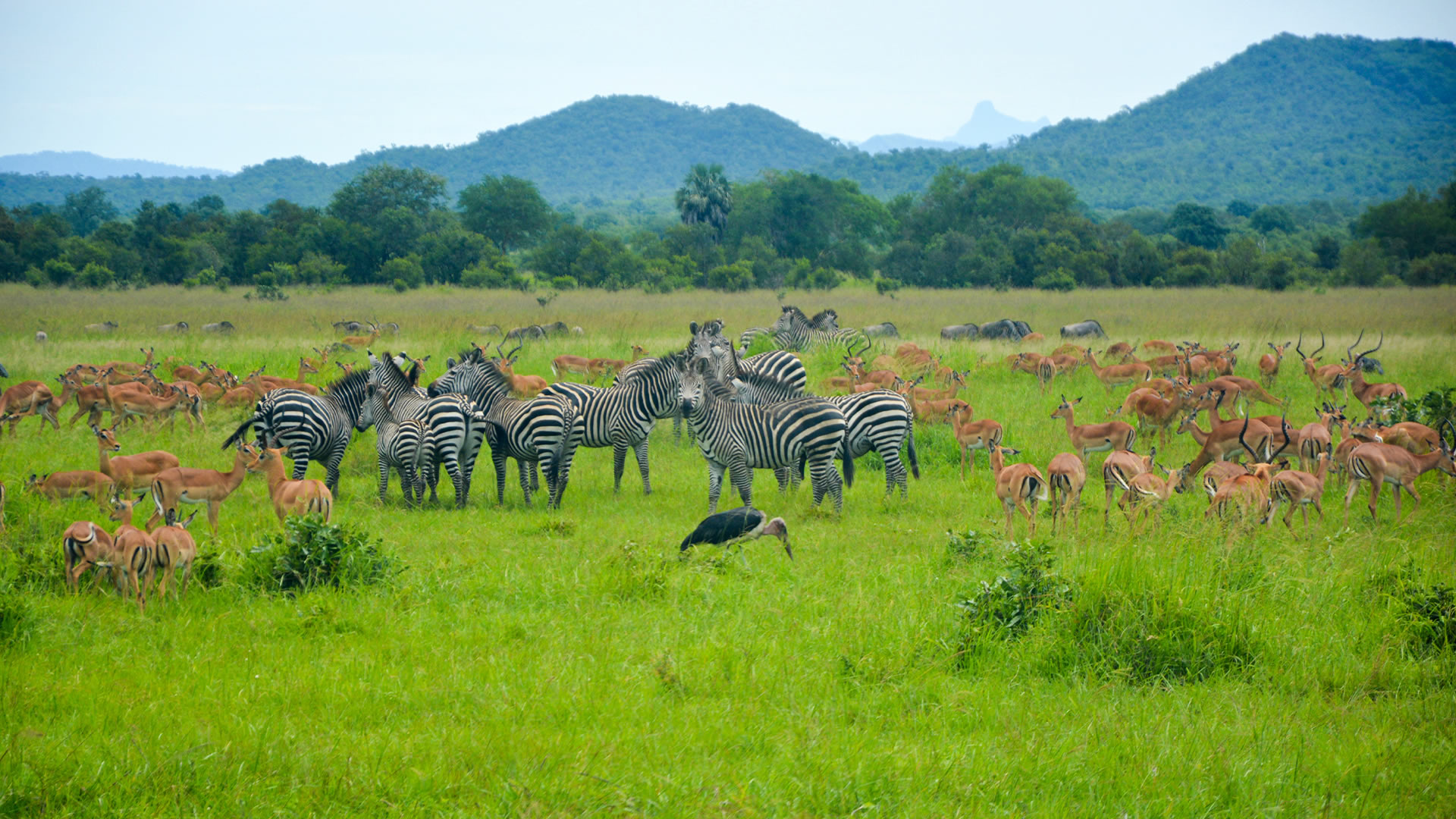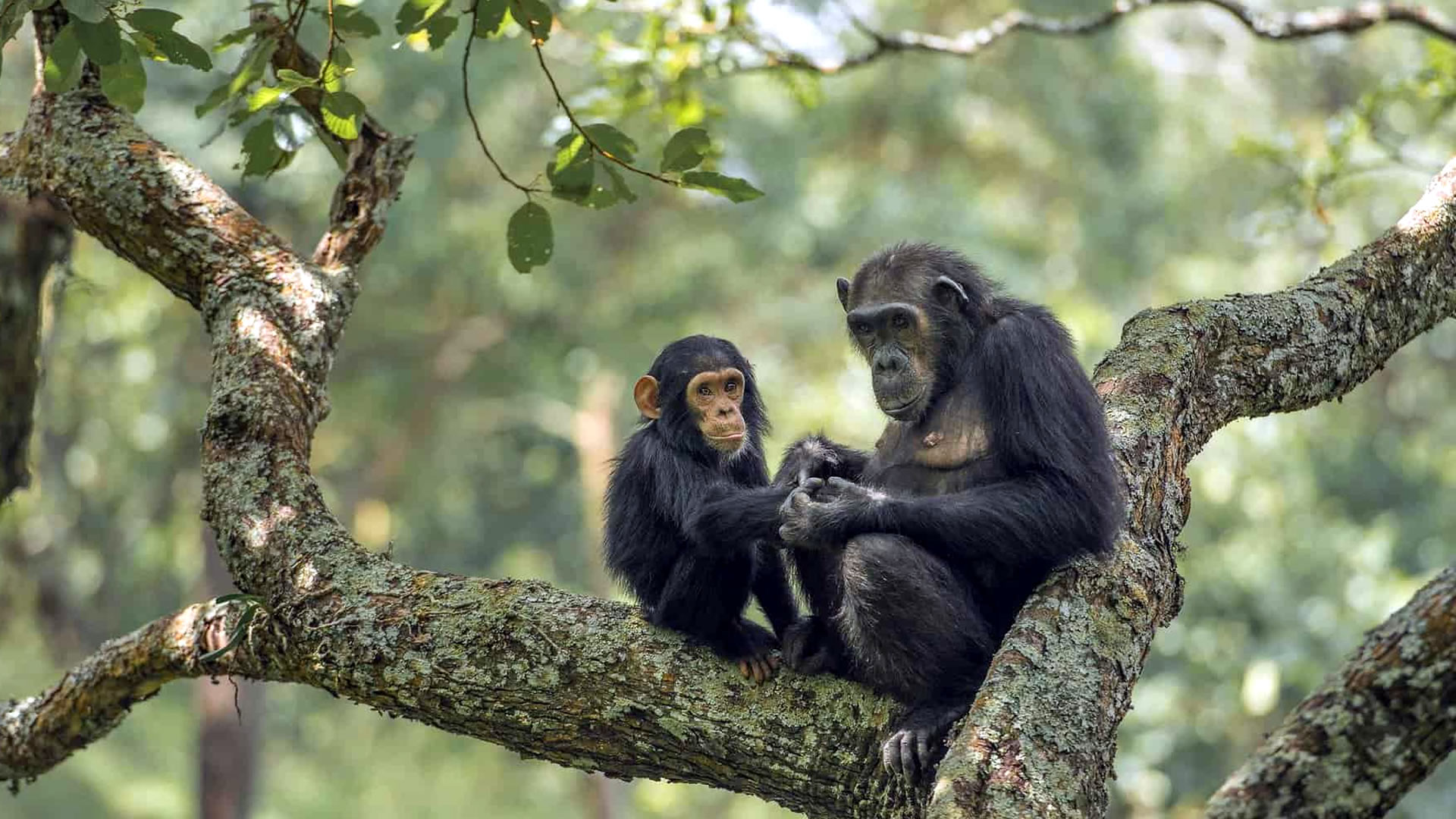Serengeti National Park
Serengeti’s immense landscape is simply stunning. This big-sky, untamed wilderness is renowned for its grassland plains punctuated with rocky outcrops (koppies) in the southeast. The Western Corridor follows the Grumeti and Mbalageti Rivers with associated riverine forests toward Lake Victoria, while the Lobo Hills area is characterized by big granite boulders reaching up in the sky. Farther north the Mara River sets the scene for the infamous river crossings, the ultimate highlight of the wildebeest migration. Game drives in Serengeti are highly productive. Depending on your program, you can structure the day around two separate game drives (morning and afternoon) or go out for a full day with a picnic lunch. Budget permitting, you could mix it up with a hot-air balloon safari. Who doesn’t want to experience the Serengeti from the sky? After landing, you’ll be treated to a champagne breakfast in the bush. Night drives and guided walks are also offered at some camps and lodges.


